Today I’m sharing with you my version of the ever delicious Vietnamese Fried Spring Rolls (Cha Gio). These rolls are packed with a mixture of ground pork, vegetables, Asian seasonings and of course, noodles, all wrapped up in thin wheat wrappers and fried to perfection. They’re not only delicious but also fun to make and perfect to serve as an appetiser or light meal. Make these and bring a taste of Vietnam to your kitchen!
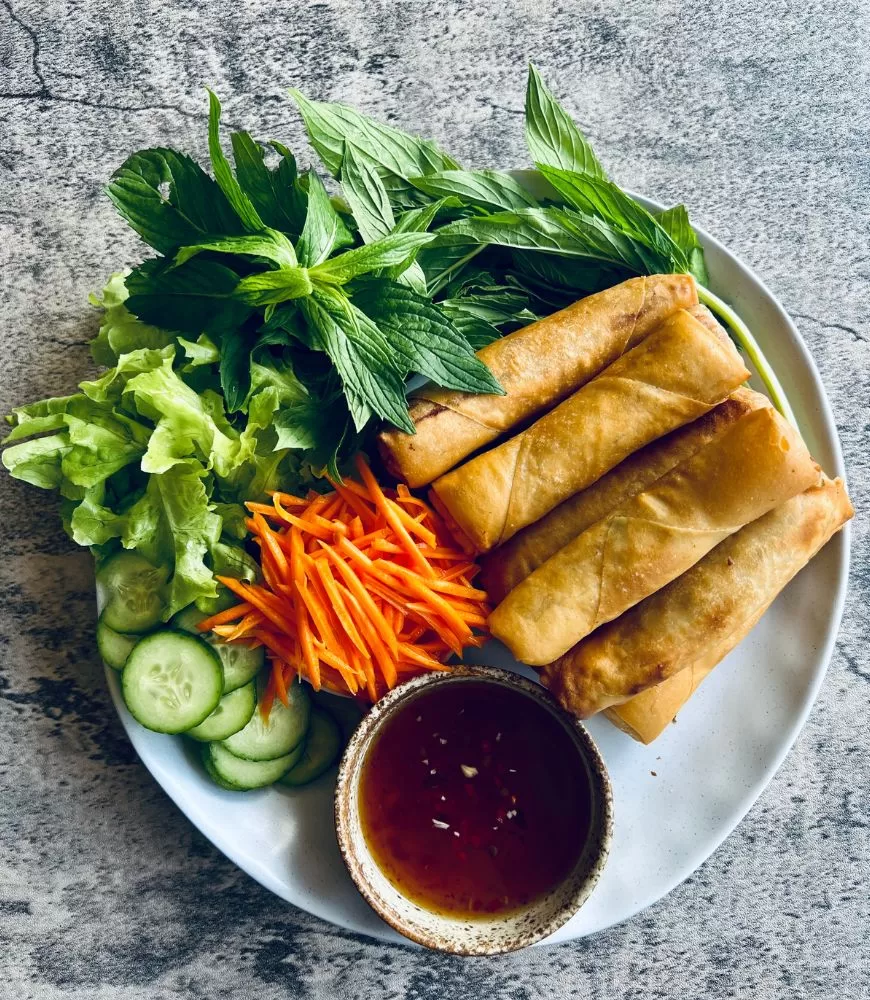
Wheat wrappers versus rice wrappers
Vietnamese fried spring rolls are traditionally made with rice paper. I prefer to use spring roll wrappers which are made from wheat. Wheat wrappers go lovely and golden and are much easier to work with all round for rolling and frying. Rice paper wrappers don’t tend to stay crisp for as long. They can be dangerous when frying (moisture from the rolls and hot oil don’t mix great,) and they also do not crisp up nearly as well as wheat wrappers.
By all means, if you wish to use rice paper for the filling mix, it certainly can be done. If using this option, make sure to allow your spring rolls to dry out, uncovered, in the fridge, for at least 30-60 minutes prior to deep frying to allow the fridge to remove some of the excess moisture from the wrappers. Another tip when using these wrappers, is only place one spring roll at a time into the hot oil and keep it separated from any others in the oil until the outside surface has ‘sealed’ so to speak, otherwise they stick together. It takes much longer to fry rice paper then it does wheat wrappers.
Adding mushrooms?
Vietnamese spring rolls generally also contain dried and soaked Wood Ear Mushrooms. I don’t add them as Im not a fan of them, but you can certainly add them. Soak 1/4 cup of wood ear mushrooms in boiling water for around 15 minutes. Drain and squeeze dry, finely chop and add to the mixture before rolling.
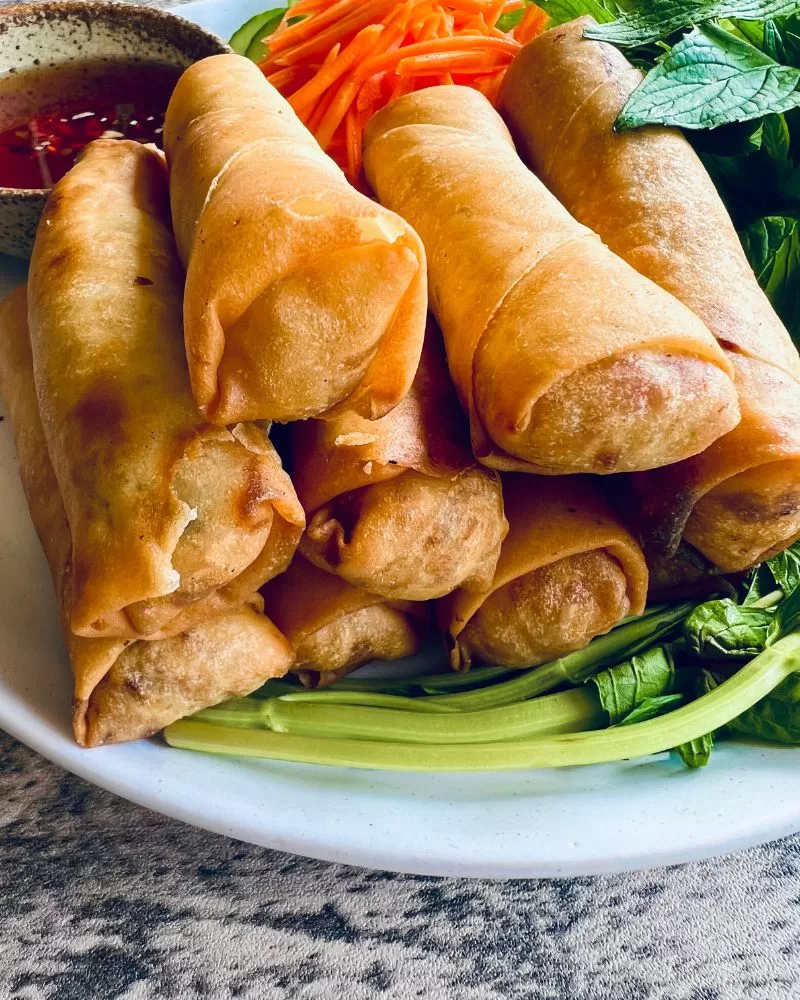
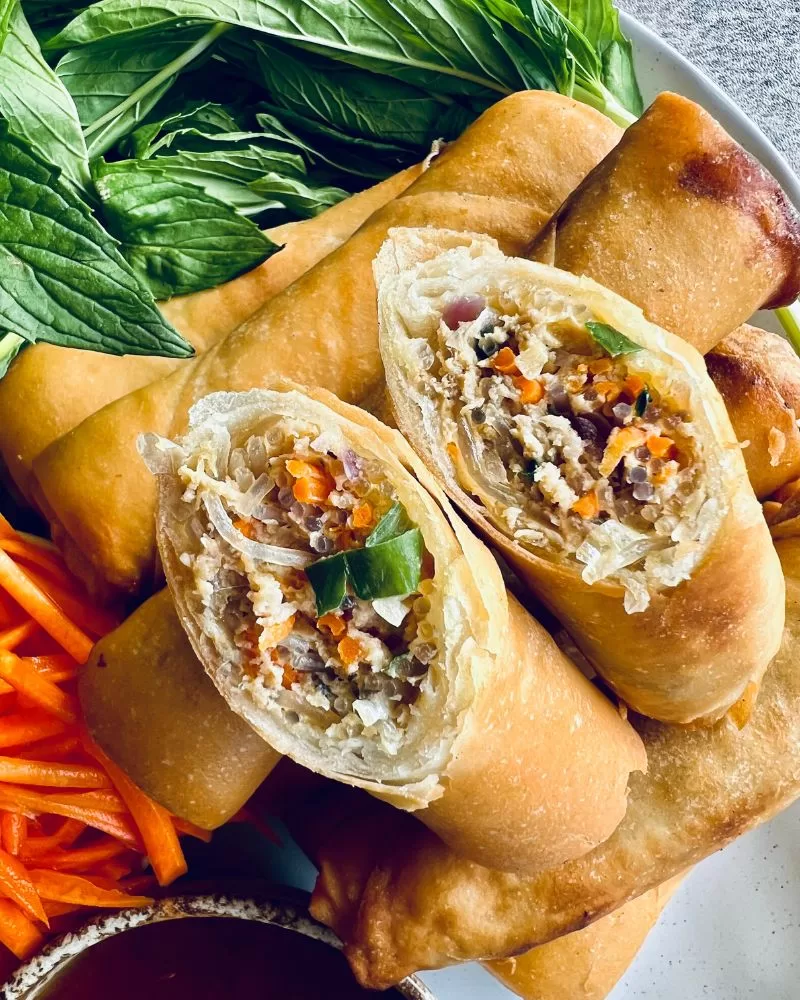
How to make the spring rolls
The filling is simply a matter of soaking the noodles until softened then draining, patting dry then cutting into short lengths. Add to a bowl with the remaining filling ingredients and mix well.
The longest part of this recipe is always going to the rolling. But once you get on a ‘roll’ they will be done before you know it. Below is a step-by-step guide to preparing the rolls before frying.
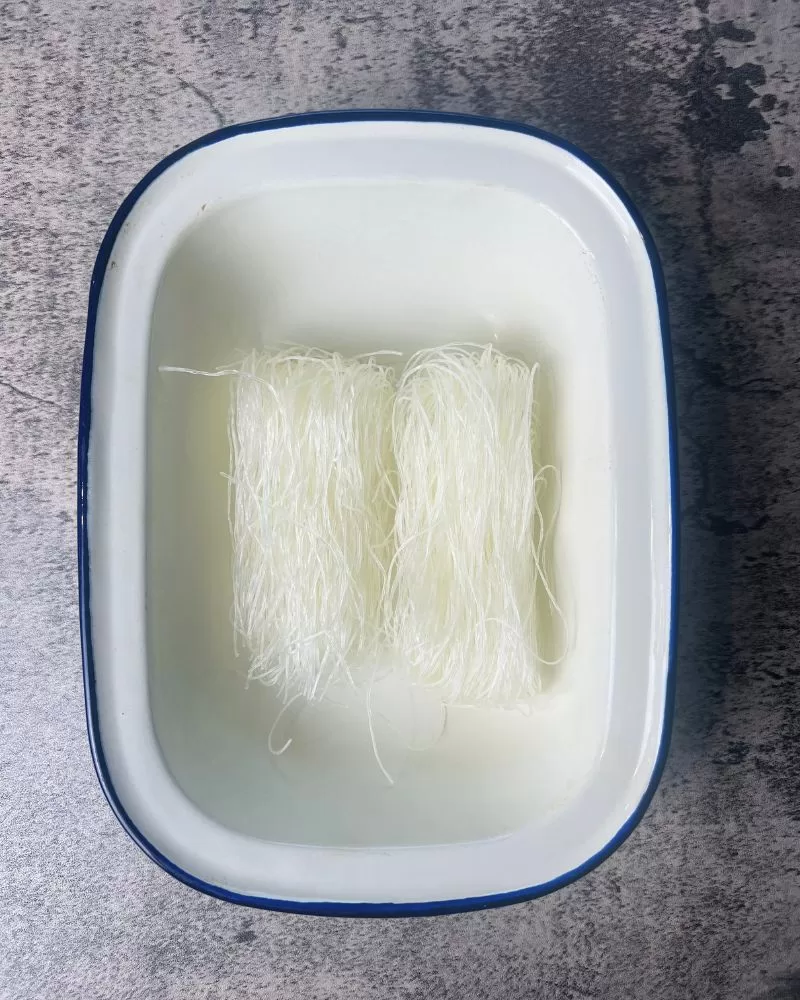
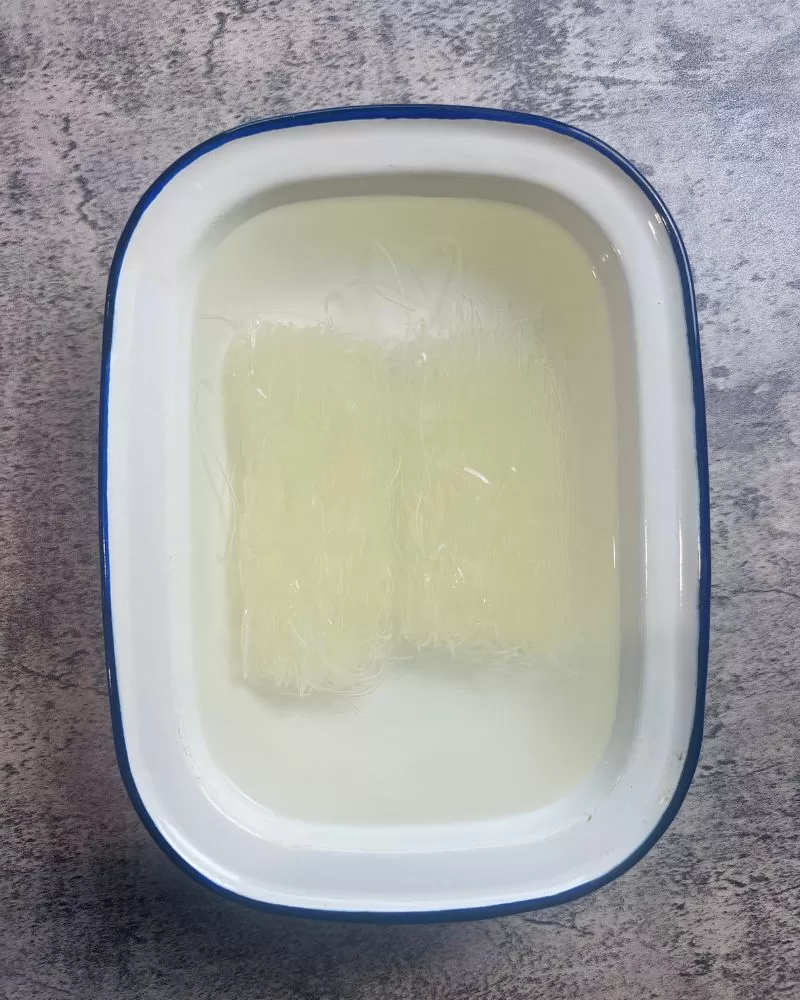
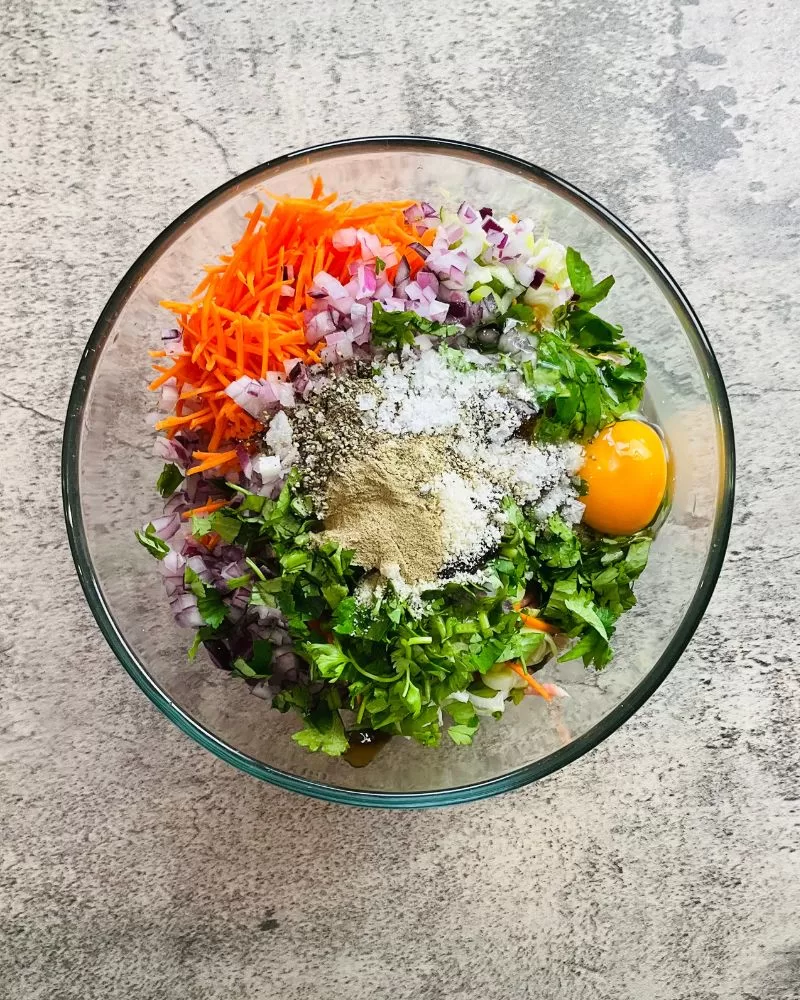
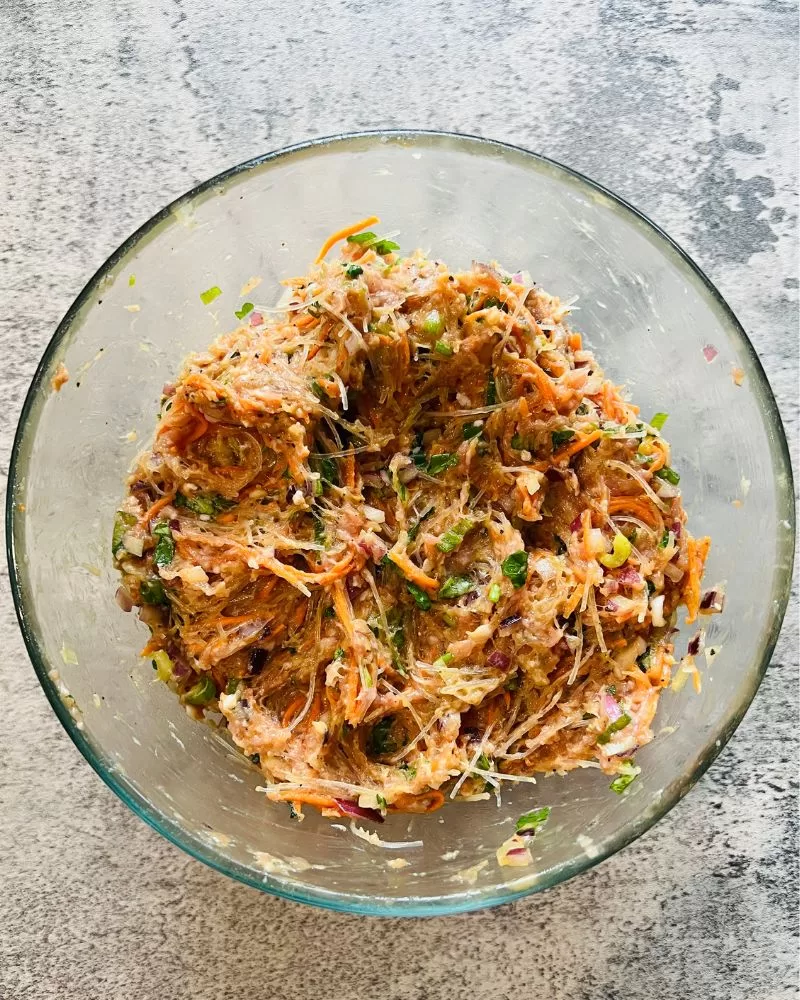
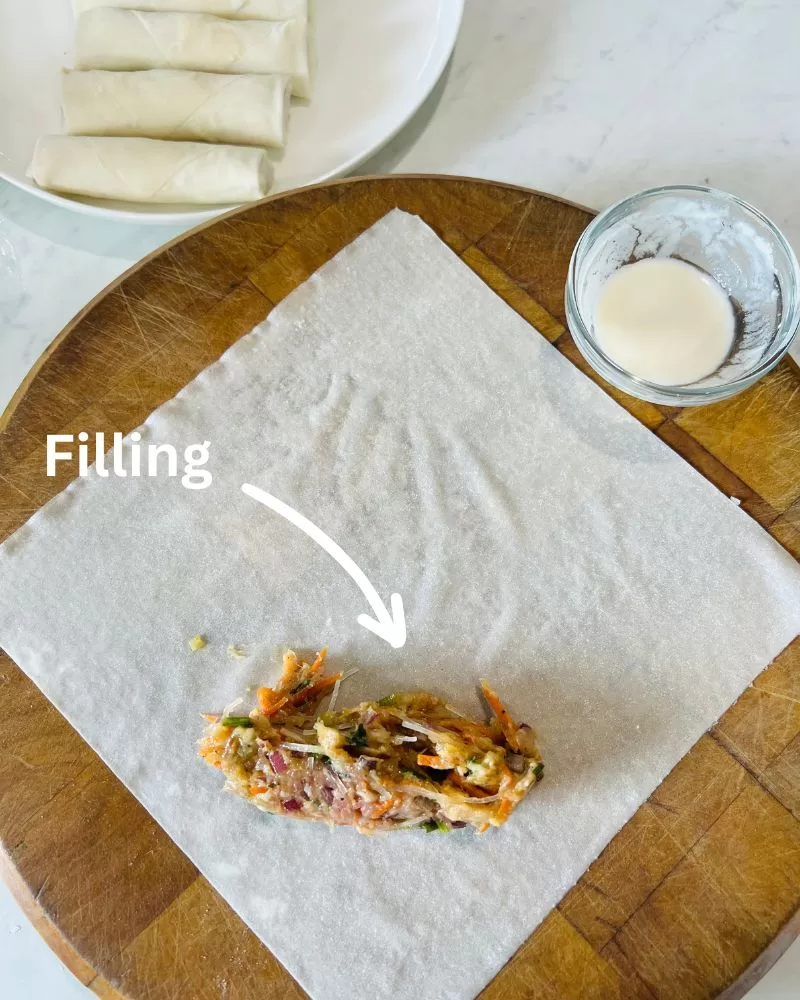
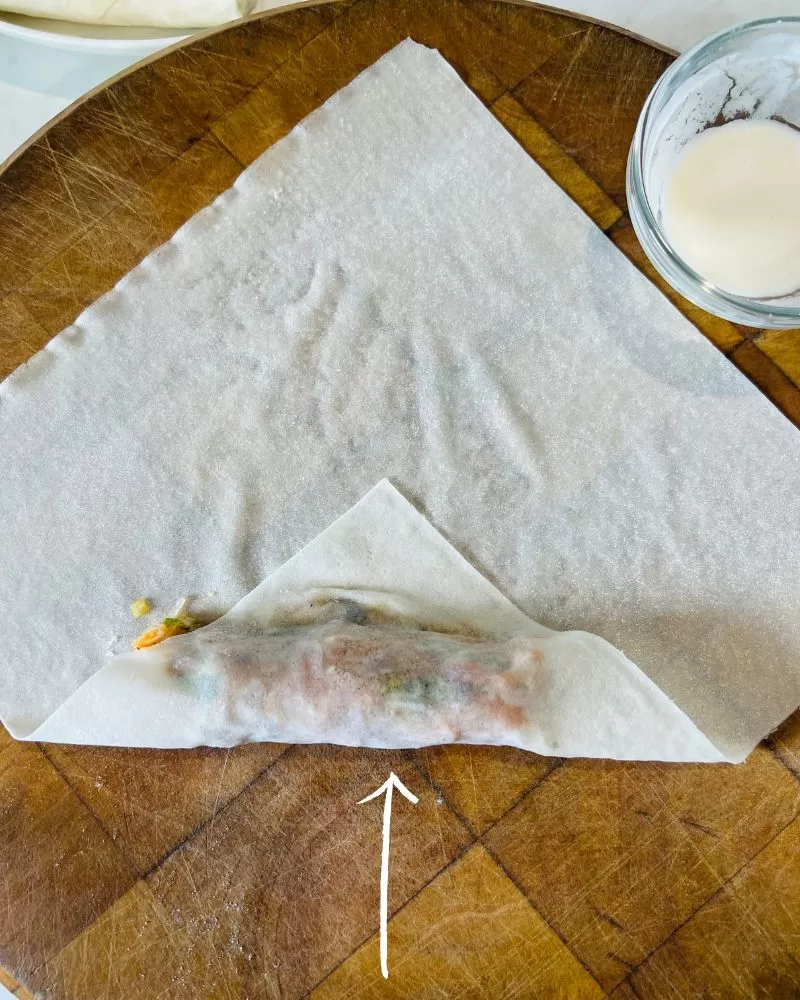
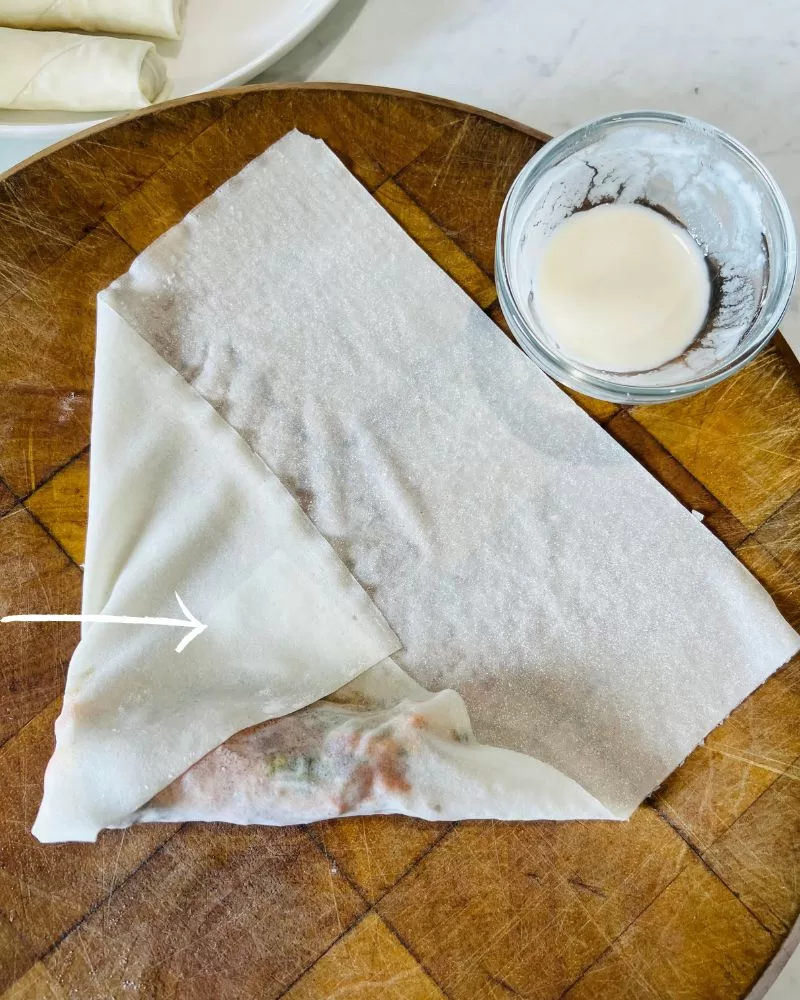
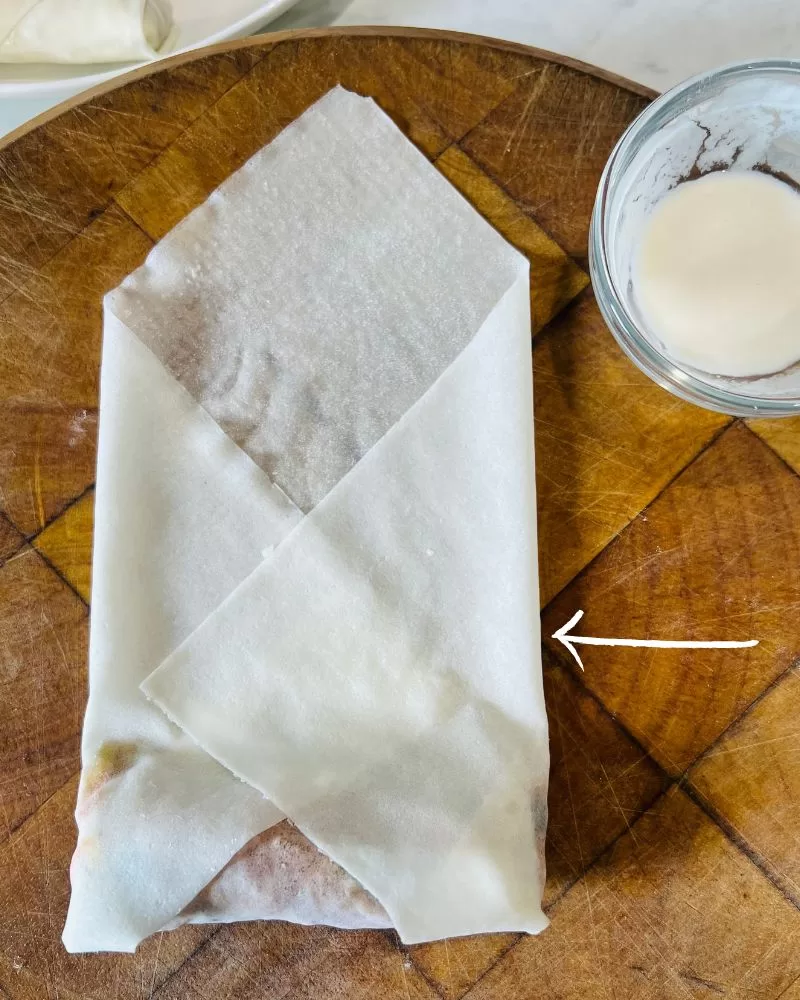
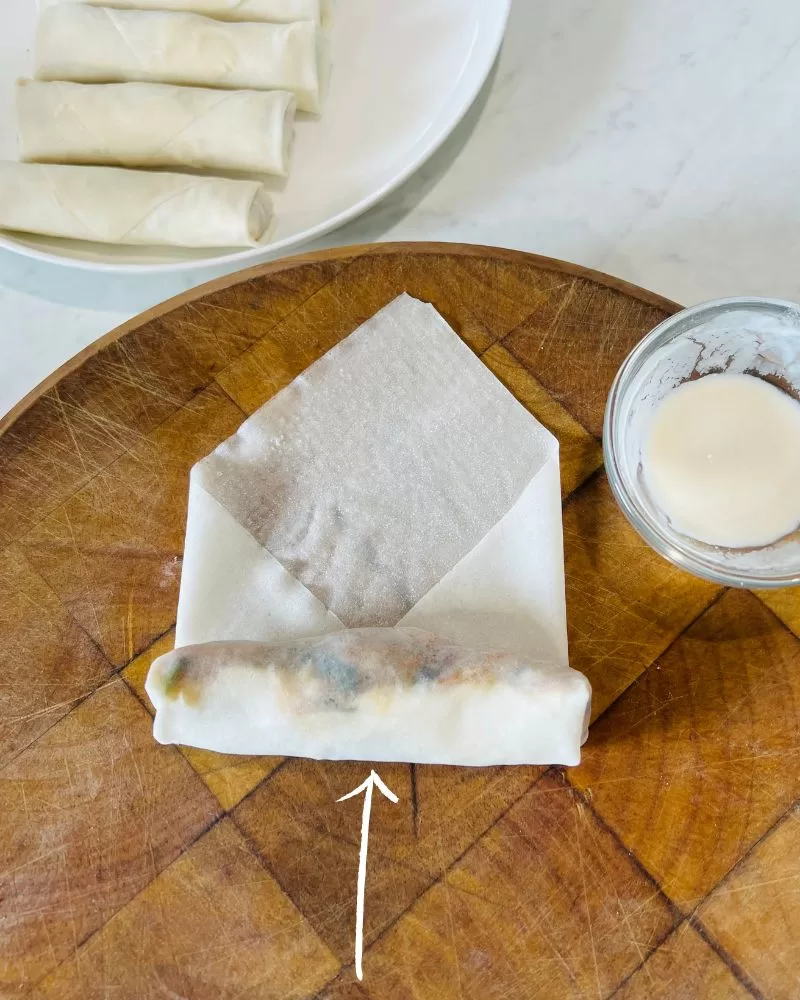
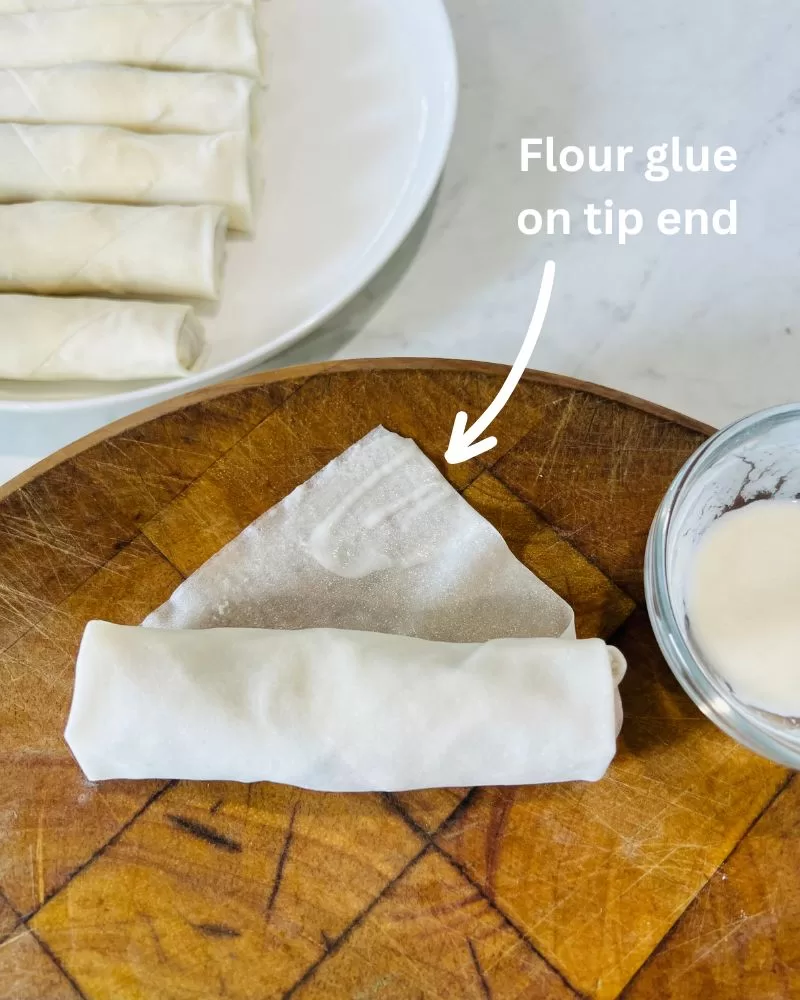
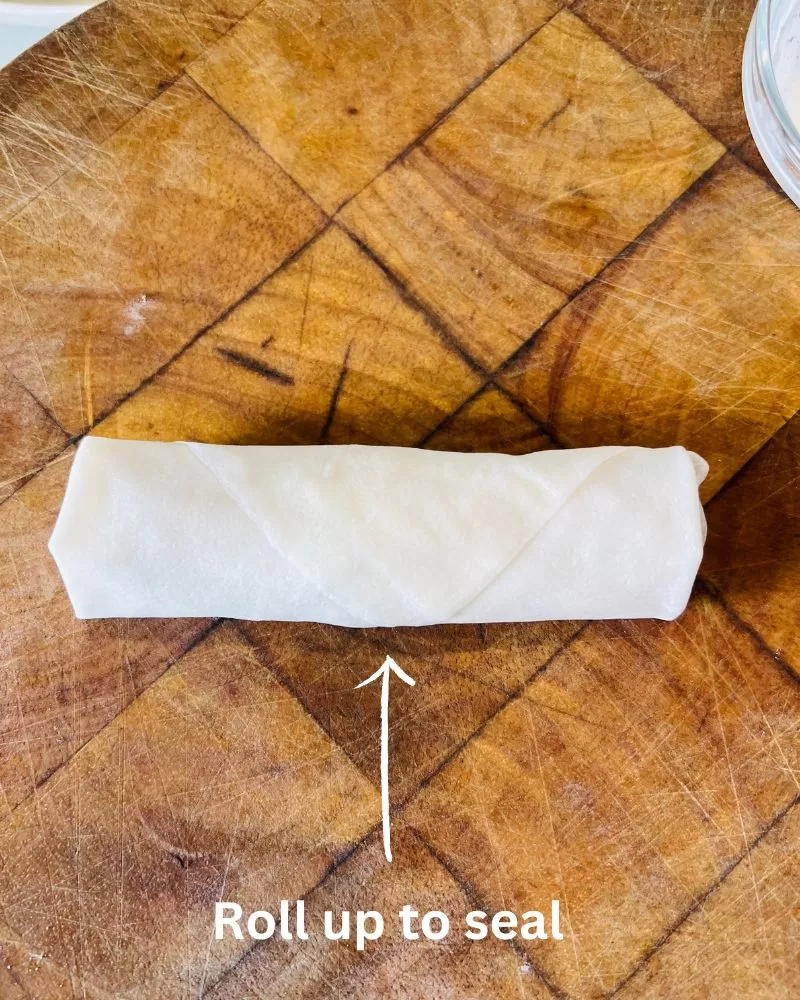
How to cook the Vietnamese spring rolls
To achieve the classic crunchy texture deep frying is the way to go. It’s a straightforward and quick process, but it’s crucial to ensure that the spring rolls are 100% cooked through before serving. Since the filling is raw, cutting one open to check ensures that it has been thoroughly cooked through.
Here’s a step-by-step guide for deep frying your spring rolls:
- Heat Oil: Heat enough oil in a wok, deep saucepan (filled to about 1/3 up the sides), or alternately use an electric deep fryer following the manufacturer’s directions. Heat the oil to 170 degrees Celsius.
- Tip: To test if the oil is ready, drop a cube of bread into the oil—it should crisp up within 20 seconds. Alternatively, use a laser temperature gadget for accuracy.
- First Deep Fry: Work with 4-5 spring rolls at a time. Carefully lower them into the hot oil and cook for 4-6 minutes or until they are golden brown and crispy. Use a slotted spoon to remove them, drain on paper towels quickly, and then transfer to a wire rack. This helps maintain their crispiness.
- Repeat: Repeat the frying process with the remaining spring rolls, ensuring that the oil returns to the correct temperature before frying each batch.
- Second Deep Fry: Reheat the oil to 190 degrees Celsius. Do a second fry on the spring rolls, in batches, for 1-2 minutes until golden brown and 100% cooked through (make sure to test one). Drain and set aside.
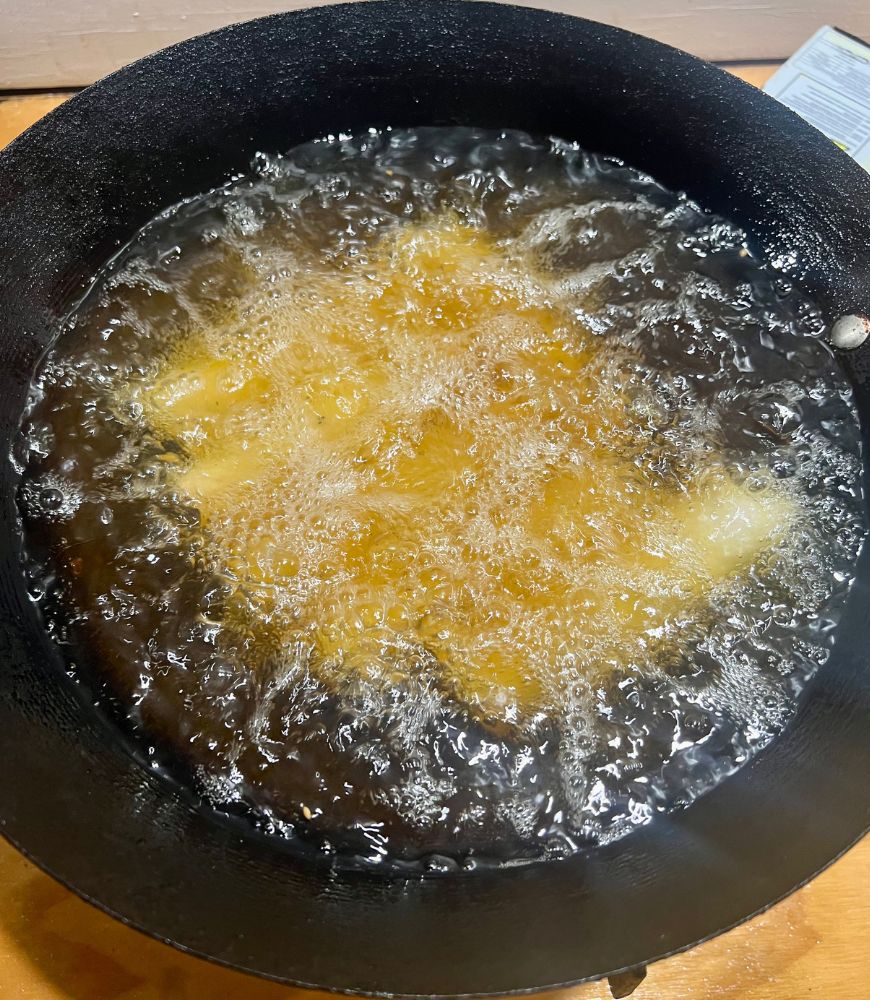
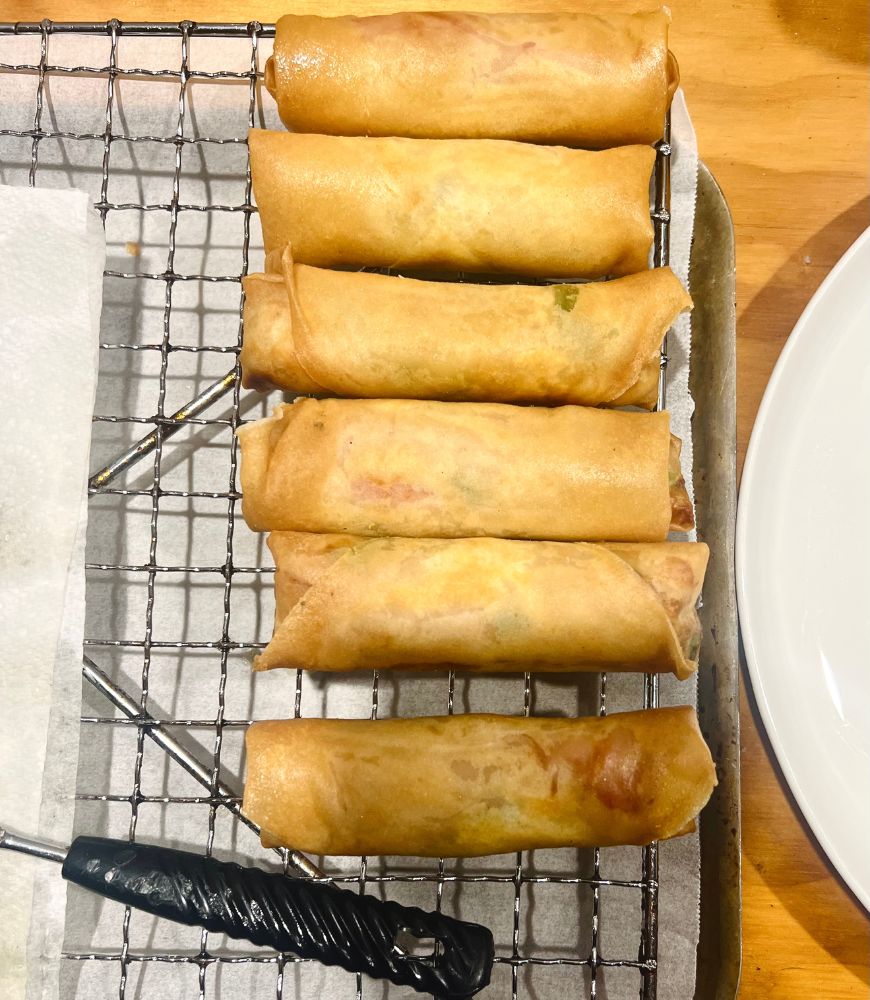
Why do a double fry?
Double deep frying is a cooking technique commonly used for certain meats, including items like chicken wings, french fries, and, in this case, spring rolls. The process involves frying the food twice at different temperatures, and it serves several purposes:
- Crispiness: The primary reason for double frying is to achieve a crispier texture. The initial fry cooks the food through and begins the process of developing a crispy exterior. The second fry at a higher temperature helps to further dehydrate the surface, resulting in a more substantial and crunchy crust.
- Moisture Control: Double frying is effective in controlling the moisture content of the food. The first fry allows the interior to cook while retaining moisture. The second fry at a higher temperature then removes excess moisture from the surface, preventing the food from becoming soggy.
- Colour Development: The double frying process contributes to the development of an appealing golden-brown colour on the exterior of the food.
- To Be Sure These Rolls Are Cooked Through: The last purpose and also a very important one, is that the filling in these rolls contain raw pork. By doing a double fry on these, it will ensure that your rolls will be cooked throughly through. Always test one though to be certain before serving them!


Serving suggestions
Deep fried food is best served immediately or shortly after frying to preserve the crunch and texture. If you wish to cook them before guests arrive of make shortly ahead of time, they are best placed onto a baking tray and kept warm in a low 100C oven until ready to serve.
The spring rolls can be served as an appetiser, snack, light meal or served as part of a vermicelli noodle bowl.
The spring rolls (Cha Gio) are traditionally served with:
- Nuoc Cham: Vietnamese dipping sauce with fish sauce, lime juice, sugar and chilies (recipe below)
- Pickled carrot and daikon (I only serve with carrot as I am not a daikon fan)
- Fresh herbs: Regular mint, Vietnamese mint and/or Thai basil
- Fresh veggies: Sliced cucumbers and lettuce. You place a spring roll into the lettuce along with some herbs, pickled vegetables then roll up, dunk and serve.
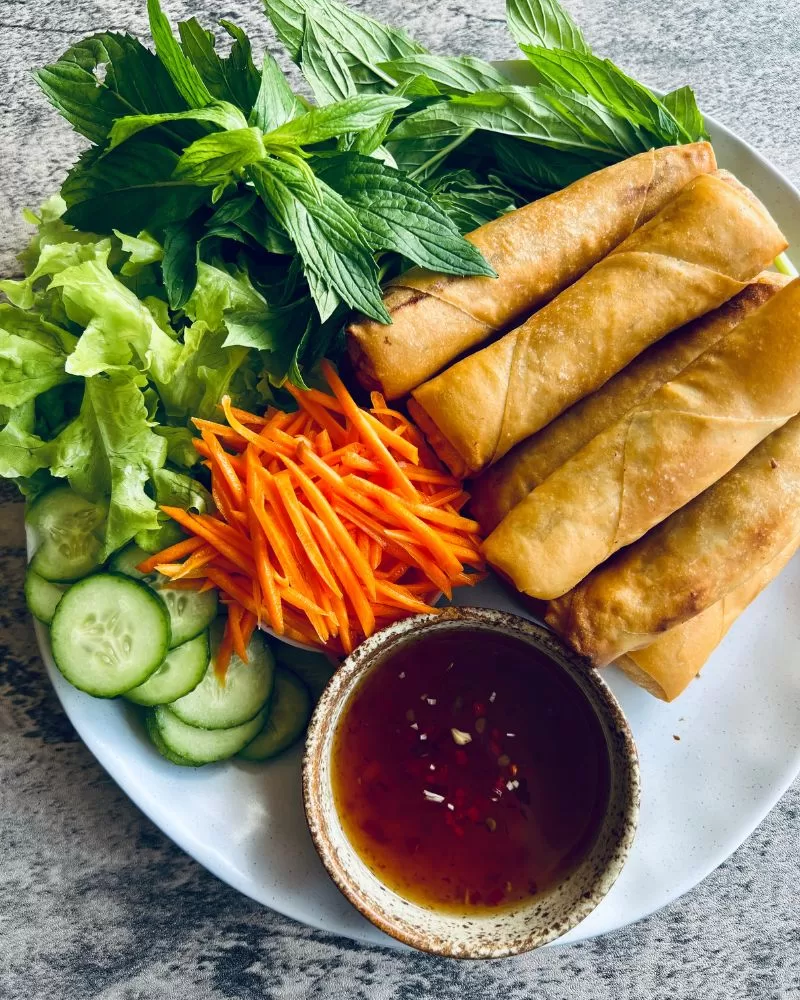

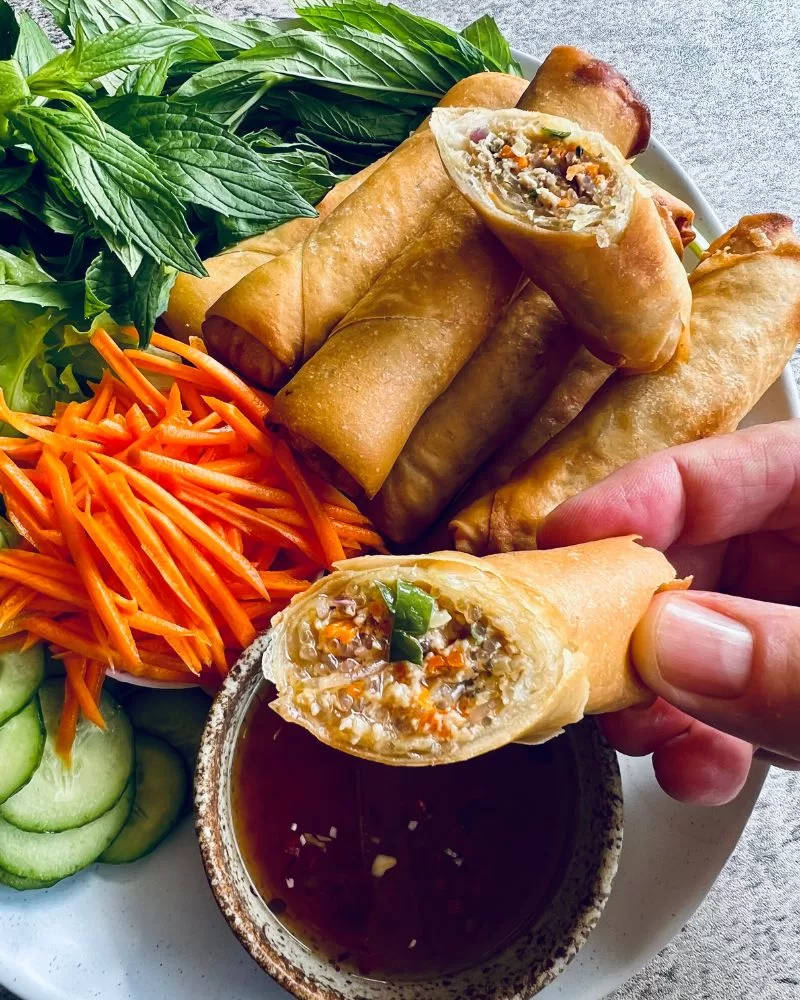
❄️ Storage
FRIDGE:
Any leftover spring rolls that have already been cooked can be stored in the fridge for up 3-4 days. Follow the reheating guide below for the best outcome.
FREEZE:
The spring rolls are best to freeze un-cooked. To freeze un-fried spring rolls, place them onto baking paper-lined tray and freeze in a single layer for until frozen solid. Once frozen, transfer them to a zip-lock bag, label, date and freeze for up to 3 months.
TO COOK ONCE FROZEN:
If you have frozen the spring rolls as above, DO NOT DEFROST first before frying (thawing them will make them soggy and dangerous to fry due to excess moisture). Cook as directed in the recipe directly from frozen, but add a few extra minutes onto the frying time and make sure they are 100% cooked through before serving.
REHEATING AFTER BEING COOKED:
To reheat once cooked, you can deep fry again for a few minutes to restore the crispness and heat through, bake in a 180C oven till hot or air-fry on 180C until heated through. They will not be as good as when first fried but still perfectly fine to enjoy.


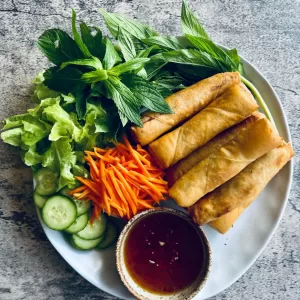
Vietnamese Fried Spring Rolls (Cha Gio)
Ingredients
- 80g bean thread vermicelli noodles (2 bundles)
- 500g pork mince (not lean)
- 1 large carrot, finely grated
- 2 spring/green onions, thinly sliced
- 2-3 eschalots, finely diced
- 2 cloves garlic, finely chopped or grated
- ¼ cup coriander leaves & stems, finely chopped
- 1 egg
- 1 tablespoon fish sauce
- 2 teaspoons oyster sauce
- 1 teaspoon chicken stock powder
- 1 teaspoon caster sugar
- 1 teaspoon cracked black pepper
- 1 teaspoon salt
- 250g packet (20 sheets) frozen spring roll pastry, thawed (See notes)
- Vegetable oil, for deep frying
FLOUR GLUE (TO SEAL)
- 1 tablespoon plain flour (AP flour)
- 3 teaspoons water
NOUC CHAM DIPPING SAUCE
- 2 tablespoons fish sauce
- 2 tablespoons caster sugar
- 2 tablespoons warm water
- Juice of 1 lime
- 1 clove garlic, finely chopped
- 1 small birds eye chilli, diced
Instructions
- Place the vermicelli noodles into a bowl. Cover with warm water and allow to soak for 15 minutes. Drain and pat dry with paper towel then using scissors, cut into roughly 4cm lengths. Place into a bowl.
- Add the pork mince, carrots, spring/green onions, eschalots, garlic, coriander, egg, fish sauce, oyster sauce, stock powder, sugar, pepper and salt. Using your hands, mix until well combined.
- Working with one wrapper at a time, place a heaped spoonful of the filling onto the corner closest to you. Fold the wrapper over to enclose then fold the sides in. Continue rolling up firmly (not that firmly that it splits though) but just before the end, using your finger, brush a little “flour glue” over the end corner then roll up to fully enclose and seal. Repeat with remaining ingredients until you have 20 rolls. Cover and chill until required (you can also freeze at this point too. see instructions in post above).
- Heat enough oil in a wok or deep saucepan to come one-third up the sides until it reaches 170℃. Alternately, use an electric deep fryer following the manufacturer’s directions. Tip: To test if the oil is ready, drop a cube of bread into the oil—it should crisp up within 20 seconds. Alternatively, use a laser temperature gadget for accuracy.
- First Deep Fry: Working with 4-5 spring rolls at a time, carefully lower them into the hot oil and cook for 4-6 minutes or until they are golden brown and crisp. Use a slotted spoon to remove them, drain on paper towels quickly, and then transfer to a wire rack. Repeat the this process with the remaining spring rolls, ensuring that the oil returns to the correct temperature before frying each batch
- Second Deep Fry: Reheat the oil to 190℃. Do a second fry on the spring rolls, in batches, for 1-2 minutes until golden brown and 100% cooked through (make sure to test one). Drain and set aside.
- Serve the Vietnamese fried spring rolls with the Nouc Cham Dipping Sauce or your sauce of choice along with lettuce, mint, pickled carrot and cucumber, if desired.
FLOUR GLUE
- Combine flour and water in a small bowl until a thick paste forms.
NOUC CHAM
- Combine all ingredients in a screw-top jar and shake until sugar has fully dissolved. Alternately, whisk together in a small bowl. Chill in the refrigerator until required. Use within 1 week.
Notes
- COOKS NOTES:
Oven Temps: Oven temperatures are for conventional, if using fan-forced (convection), reduce the temperature by 20˚C.
Measurements: We use Australian tablespoons and cups: 1 teaspoon = 5 ml, 1 tablespoon = 20 ml & 1 cup = 250 ml.
Herbs: All herbs are fresh (unless specified) and cups are lightly packed.
Vegetables: All vegetables are medium size and peeled, unless specified.
Eggs: We use extra-large size and eggs are 55-60 g each, unless specified. - SPRING ROLL WRAPPERS
It’s essential to choose the right spring roll wrappers for the best results. I recommend purchasing them from the freezer section at Coles supermarket. However, I advise against buying the ones from Woolworths, as the brand they sell tends to be challenging to separate, resulting in significant losses. The Coles wrappers are excellent and easy to separate. If you have access to an Asian grocer, their wrappers are also suitable.In case Woolworths is your only option, you can still make the spring rolls, but be prepared for a bit more effort in handling the wrappers.TIP: To Thaw – Pop the frozen wrappers into the fridge an hour or so before rolling the spring rolls too ‘gently’ thaw. It helps with less condensation on the wrappers therefore less tearing.
You may also enjoy:

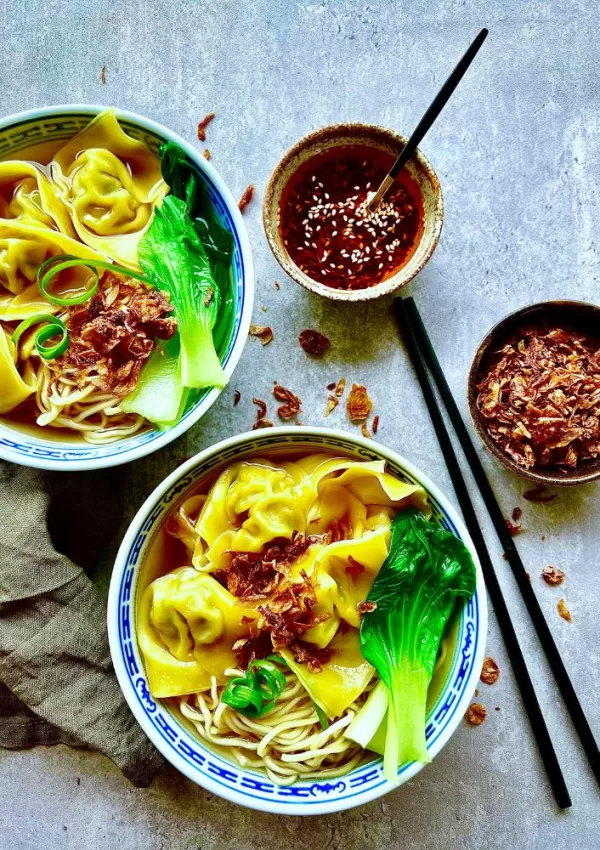
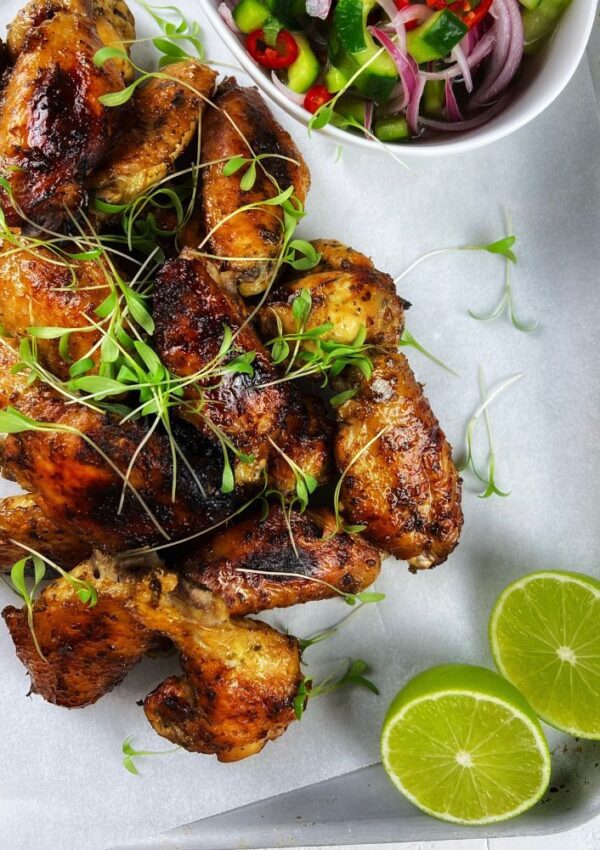


Leave a Reply